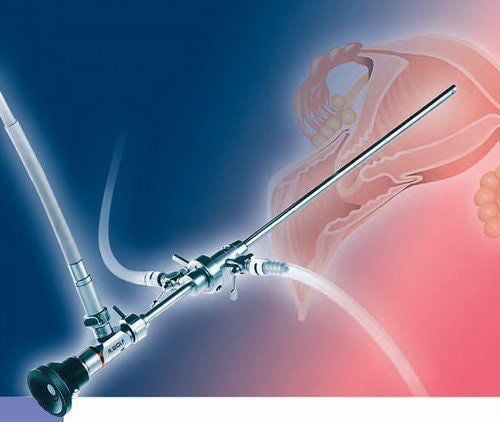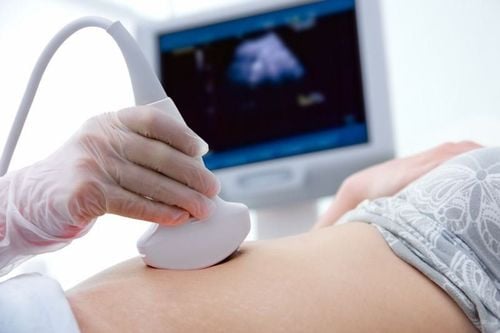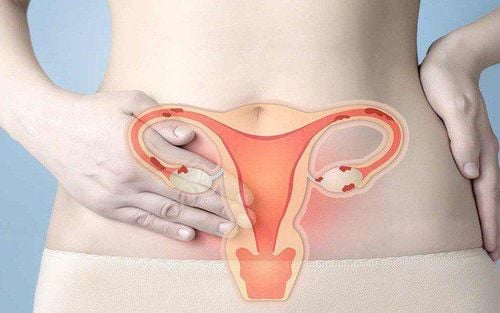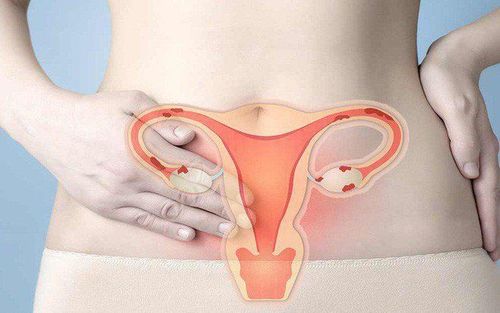This is an automatically translated article.
The article was written by MSc Nguyen Ngoc Chien - Clinician - Reproductive Support Center of Vinmec Times City International HospitalDiagnostic hysteroscopy is a procedure used to examine the inside of the uterus. The doctor may order a hysteroscopy in some cases during a gynecological examination.
1. What is hysteroscopy?
Hysteroscopy is a procedure that inserts a laparoscope with a camera into the uterine cavity for diagnostic purposes or for intrauterine procedures. This procedure is now more indicated in the diagnosis of uterine abnormalities and in examining the uterus in infertile patients. This procedure is performed using a hysteroscope, which is a narrow telescope with a light. integrated with a camera that brings images to a screen so doctors can see inside your uterus The laparoscope is inserted into your uterine cavity through your vagina and cervix (the entrance to the uterus), which means you don't need to make an incision.
2. When can a diagnostic hysteroscopy be performed?
Find the cause of abnormal symptoms such as: Prolonged periods, abnormal vaginal bleeding, bleeding after menopause, pelvic pain, repeated miscarriages or difficulty in getting pregnant (infertility) Diagnosis uterine diseases: such as uterine fibroids, uterine polyps, uterine adhesions (causes infertility and infertility)

3. How is diagnostic hysteroscopy performed?
The procedure takes about 10-30 minutes. Local anesthesia or general anesthesia is possible for cases of cervical constriction. Hospitalization during the day, without time and cost of hospitalization.
4. Is diagnostic hysteroscopy painful?
You may feel some pain in your lower abdomen during the procedure If you feel too uncomfortable, tell your doctor or nurse. They can stop the procedure at any time. You will talk to your anesthesiologist about pain relief methods and they will choose the right method for you
5. Possible risks during diagnostic hysteroscopy
Hysteroscopy is generally very safe but like any procedure, there is a small risk of complications.
Injury to the uterus: this is uncommon but may require treatment with antibiotics or, in rare cases, laparoscopic surgery to manage the lesion.

Injury to the cervix - this is rare and usually can be easily repaired Uterine infection: with symptoms such as foul-smelling vaginal discharge, fever and heavy bleeding; it can usually be treated with a short course of antibiotics.
6. Diagnostic hysteroscopy
6.1 Preparing for hysteroscopy Do basic blood tests to check that you are healthy enough for the procedure? Examination and treatment of gynecological infections before the procedure. If you are prescribed general anesthesia, you will need to fast or drink for several hours before the procedure. If you don't have anesthesia or just a local anesthetic, you can eat and drink as usual. 6.2 Hysteroscopy procedure Hysteroscopy usually takes 5 to 30 minutes. During this process:
You lie on a bench with your legs supported by supports and a towel used to cover your lower half. An instrument called a speculum may be inserted into your vagina to keep it open like during a pelvic exam. The vagina and cervix are cleaned with an antiseptic solution A hysteroscope (a long, thin tube that contains a light and camera) is inserted into your uterus - you may experience cramping and discomfort when it goes through your cervix. Fluid is gently pumped into the uterus so the doctor can easily see inside. The camera sends images to a monitor so your doctor or specialist nurse can spot any abnormalities. If at any point you find the procedure too uncomfortable, tell your doctor or nurse. They can stop at any time.

6.3 After hysteroscopy You will be able to go home immediately after the hysteroscopy, or stay in the hospital for a few hours with general anesthesia. You can go back to work the next day
While you are recovering:
You can eat and drink normally right away without general anesthesia You may experience stomach pain like menstrual cramps or a little discharge Vaginal bleeding, that's completely normal. If you feel a lot of pain, contact your doctor for advice. You should avoid sex for a week, or until the bleeding stops, to reduce the risk of infection. Your doctor or nurse will discuss your hysteroscopy findings with you before you leave the hospital.
In order to help customers detect and treat other gynecological diseases early, Vinmec International Hospital has a basic gynecological examination and screening package, helping customers detect early inflammatory diseases Easy, inexpensive treatment. Basic gynecological examination and screening package for female customers, has no age limit and may have the following symptoms:
Pain, itching in the vagina Female customers have several risk factors such as poor personal hygiene, unsafe sex, abortion, ... Female customers have other symptoms such as: Abnormal vaginal discharge, itching, pain in the intimate area, abnormal vaginal bleeding . Irregular bleeding in the vaginal area Menstrual problems: irregular periods, irregular periods Abnormal vaginal discharge (smell, different color).
Please dial HOTLINE for more information or register for an appointment HERE. Download MyVinmec app to make appointments faster and to manage your bookings easily.
SEE MORE
Hysteroscopy, separation of uterus What to do when vaginal bleeding? Why do you bleed after sex?














